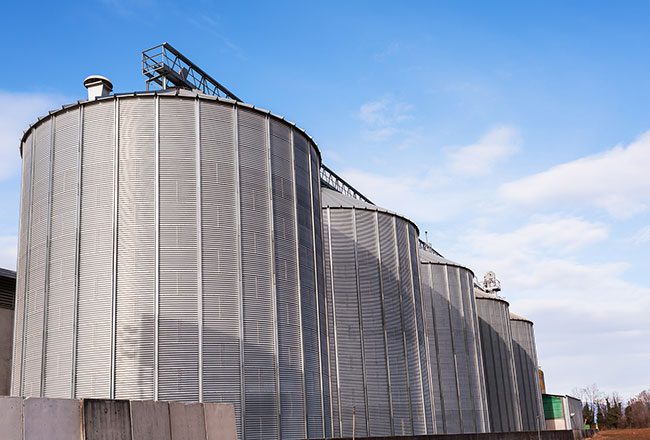Safety Precautions When Loading and Unloading Silos

While silos help solve storage challenges on different industries, they also expose workers and other farm users to security risks from grain handling equipment. The risks include explosions and fires from grain dust accumulation and respiratory or skin infections. Suffocation also puts workers at risk, with many workers collapsing in the line of duty.Creating a safe work environment begins with a clear understanding of the risks involved. Involving safety experts can help you assess the risks and work on creating a safe environment.
Different security measures help safeguard farm users against accidents that can lead to death:
Preventing Entrapment/Engulfment
Safeguarding workers from entrapment or engulfment by moving grain starts with establishing safety precautions concerned with bin entry. Powered equipment in the grain bin, such as pneumatic, electrical, hydraulic, and mechanical equipment, should remain turned off and locked out before workers enter the bin. This equipment includes augers and conveyors, which move the grain in or out of the bin. They present a serious risk of amputation and entanglement.
Workers should not walk down on grain to make it flow, because moving grain can create suction, which can pull the worker into the grain within seconds. Additionally, workers should not enter the silo when the grain accumulates on one side. If and when necessary, workers who walk or stand on grain must have a boatswain’s chair and a lifeline. This makes it easy for other workers to pull them from the silo when the grain starts moving unexpectedly.
A silo must have safety gear for the workers and employ a rescuer on site at all times. The rescuer stands outside the silo and maintains clear visual, signal, or oral communication with those inside. Through this constant communication, the rescuer is able to continuously monitor the workers inside and react immediately in case of any danger.
Preventing Explosions and Fires
Grain dust is highly flammable, and presents a serious risk of explosions or fires. These risks can occur when the accumulated grain dust encounters a heat source, such as hot bearings, sparks or fire. In a silo in which oxygen levels are high, the risk of explosion or fire from grain dust accumulation is high.
You should ensure that workers do not engage in practices that increase the risk of fires and explosions during loading and unloading in the silo. You should prohibit workers from grinding or welding in silos containing grains as these sparks could come into contact with grain dust. No worker should smoke anywhere near the silos and “no smoking” signs should be posted in various locations on site.
Before any loading or unloading occurs in a silo, an employer must ensure there is no sparking or defective wiring that may come into contact with grain dust. The employer must also assess and identify various areas in the store, which could spark a fire. These often include enclosed grain dryers; grinding equipment, and floor areas with 35 feet of bucket elevator legs.
A Standard Operating Procedure is necessary as a guiding document on how to minimize dust accumulations. It outlines housekeeping and fire guidelines that identify and minimize factors that could contribute to an explosion in the silo. Employers who develop a Standard Operating Procedure for their silo should incorporate details on dust collection methods, types of vacuum cleaners for dust collection, and methods for cleaning ignition sources.
PreventingRespiratory/Skin Hazards
Silos contain various harmful gases, chemicals and grain dust that pose respiratory and skin health risks to workers engaged in loading and unloading. Contact with grain dust can cause dust-induced breathing complications, stomach problems, skin rashes or digestion problems. Such complications include lung edema, central nervous system damage, cancer and heart and vascular diseases. Harmful gases may result from the chemicals used to preserve the produce or from spoiling grains.
Employers must provide their workers with proper protective wear, including respirators to prevent dust inhalation. The respirators should be suitable for specific chemicals or dust. Workers should avoid dusty areas whereas employers should fumigate silos regularly. Depending on the instructions of the pesticide manufacturer, silos should stay ventilated for several hours before anyone can.
The U.S.’s large production and storage of corn has influenced the construction of many silos. Silos help the U.S. meet the global demand for food, animal feed as well as ethanol-based fuel. However, the increase in silo-based accidents presents a challenge. Such accidents are preventable so long as employers and workers pay attention to safety regulations governing loading and unloading of grain from silos. A safe work environment begins with understanding the risks associated with grain and fuel handling in the silos.
We have designed and fabricated state of the art equipment and we are committed to meet our client’s needs.Let us know how we can assist you by contacting us at 419-826-4816 or online.

